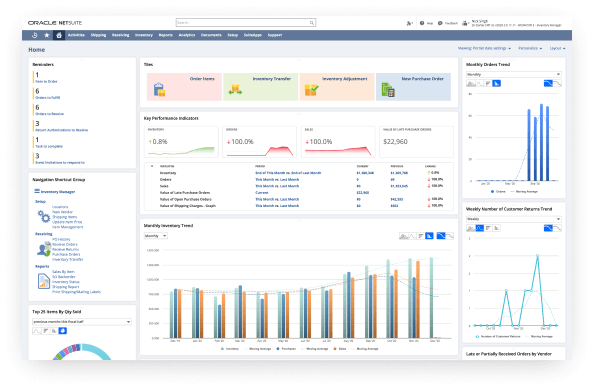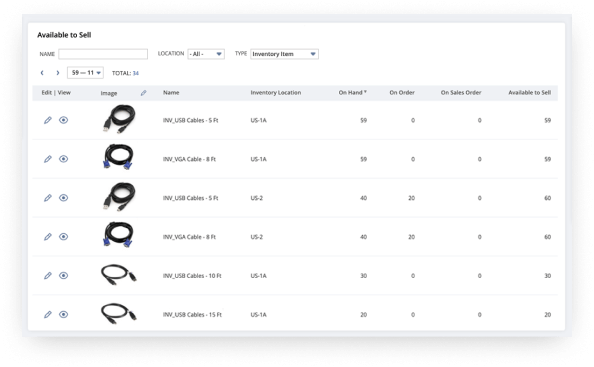Automate inventory management, reduce handling costs, optimise cash flow
What is NetSuite Inventory Management?
NetSuite Inventory Management provides a single, real-time view of inventory across all locations and sales channels, allowing businesses to reduce inventory on hand to free up cash while avoiding stockouts. By optimising inventory levels and ensuring product availability across multiple channels, NetSuite Inventory Management helps businesses keep inventory costs low while exceeding customer expectations.
Explore More Inventory Management Features With a Personalised Product Tour(opens in new tab).
Automate Inventory Tracking
Relying on spreadsheets or pen and paper to track inventory is neither efficient nor accurate. With NetSuite, your business can easily track inventory across multiple locations by automating inventory management in one unified solution.
Inventory management has improved greatly with NetSuite. We can see exactly where we have inventory and answer customer questions more efficiently.
Learn How ERP Can Streamline Your Business
Free Product Tour(opens in new tab)
NetSuite Inventory Management Benefits
NetSuite Inventory Management Features
NetSuite Inventory Management minimises manual processes by automatically tracking inventory levels, orders and sales throughout the inventory life cycle, and provides the insights needed to make data-driven decisions and clear visibility into any inventory liabilities, like excess or slow-moving stock.
Multi-location Fulfilment
NetSuite Inventory Management gives you the ability to predefine fulfilment rules to eliminate multiple shipments for a single order and avoid excess shipping charges.
With visibility into stock across all locations, you can proactively monitor stock levels and sell through, transferring inventory between locations as necessary to ensure inventory availability and minimise obsolete inventory. Sales associates are empowered to save potential lost sales in out-of-stock situations with enterprise-wide inventory availability that allows them to transfer, hold or ship items directly to the customer.
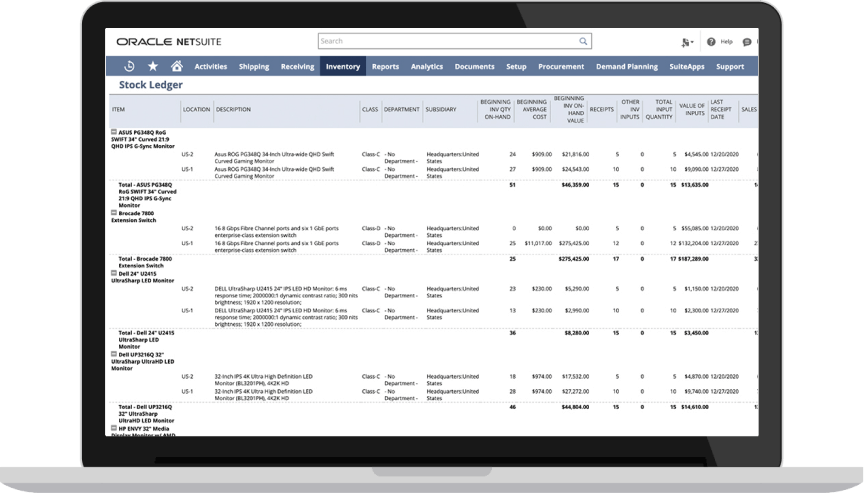
Replenishment
Fluctuations in demand, seasonality, supply chain logistics and a product’s natural life cycle must be accounted for to ensure sufficient stock on hand. Using demand-based replenishment, NetSuite Inventory Management uses historical and seasonal sales data, average lead time and number of inventory days’ of supply to dynamically manage item reorder points and maintain preferred stock levels. NetSuite automatically generates tasks and alerts and sends them to the purchasing manager.
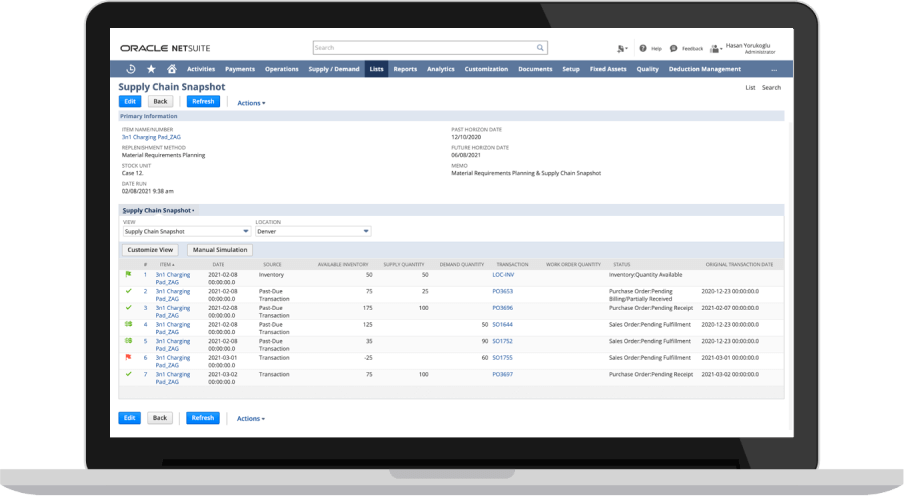
Cycle Counting
NetSuite Smart Count is an inventory cycle counting solution that enables organisations to improve the efficiency and accuracy of inventory management by automating inventory counts without freezing transactions in the entire location. The inventory level used for the count is taken at the time the count starts for each individual item. Smart Count keeps track of transactions that happen for the items being counted, and if there is any activity during the count, NetSuite automatically alerts counters so they can react appropriately. Preferences allow administrators to choose what happens if the on-hand quantity changes for an item during the count process.
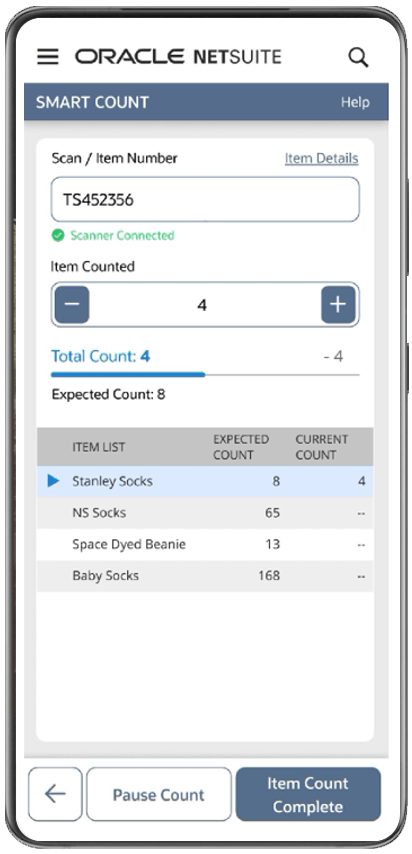
Traceability
NetSuite Inventory Management lets you back and forward trace inventory using lot and serial tracing. Lot-numbered items track the quantity and specific cost for each lot as products are purchased and produced. Serialising inventory allows you to choose a specific item when you fulfil an order. Together, lot and serial numbers let you define fulfilment strategies (such as first expiring, first out) , minimising waste and ensuring inventory is used in the most efficient way.
Bin management and defining your merchandise hierarchy also help with traceability. Matrix items track products by options such as size and colour. Updates made to the parent item are automatically applied to sub-items, greatly simplifying SKU management.
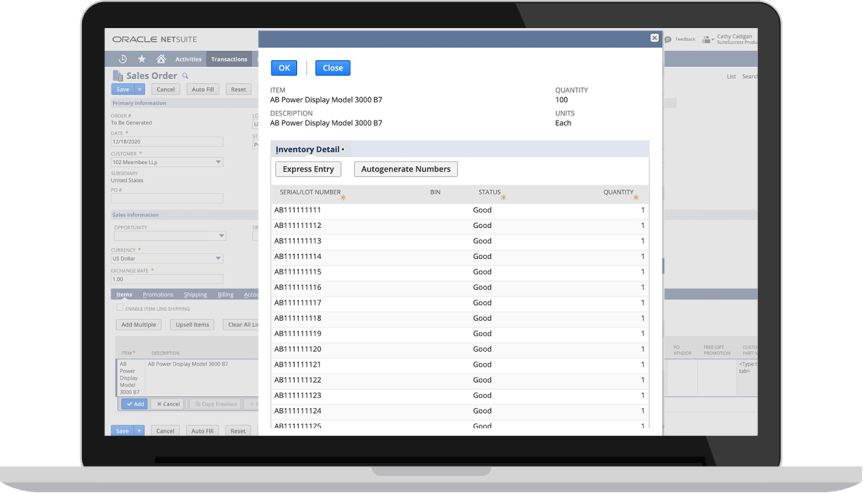
Item Visibility
The Item 360 Dashboard brings together all relevant information related to an item in a single, centralised location. By putting all the information a user could need on any item in one place inventory planning and management become easier to do. Item 360 goes beyond the basics to show information like user-selected KPls, inventory count by location and projected stock levels, with alerts for anticipated shortages or overstocks.
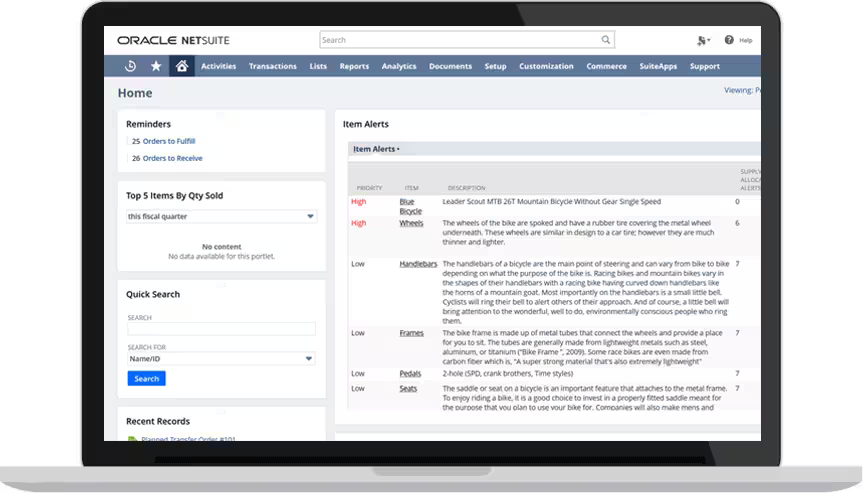
Challenges NetSuite Inventory Management Solves

Faster Time to Value
NetSuite has packaged the experience gained from tens of thousands of worldwide deployments over two decades into a set of leading practices. These practices pave a clear path to success and are proven to deliver rapid business value and get you live on NetSuite in a predictable timeframe. Intelligent, stepped implementations begin with sales and span the entire customer lifecycle, so there’s continuity from sales to services to support.

How Much Does NetSuite Inventory Management Cost?
Companies of every size, from pre-revenue startups to fast-growing businesses, have made the move to NetSuite. Looking for a better way to run your business but wondering about the cost?
Users subscribe to NetSuite for an annual licence fee. Your licence is made up of three main components: core platform, optional modules and the number of users. There is also a one-time implementation fee for the initial set up. As your business grows, you can easily activate new modules and add users — that’s the beauty of cloud software.
Inventory management capabilities are included with the NetSuite platform licence.



You Have Questions, We Have the Answers
How do I add inventory to NetSuite?
To add an inventory item in NetSuite, you must create the inventory item record, defining the item’s unique characteristics, including: units of measure, how you cost items (FIFO, LIFO, average, etc.), landed cost and replenishment method, set list price and discount price, as well as COGS.
What is inventory control?
Inventory control refers to a business’ ability to secure the required stock to fulfil anticipated orders without delay, while keeping inventory carrying costs to a minimum.
How do I adjust inventory in NetSuite?
Adjusting inventory in NetSuite can be done individually for that item or in bulk using the inventory worksheet. You can update item quantities individually in the Transaction menu, but changes to the inventory record such as value, unit cost, etc., must be done in the item master.
Resources

Data Sheets
Access specifications, features and benefits of NetSuite Inventory Management.

Customer Stories
Spark ideas with success stories from NetSuite customers.

Product Demos
See NetSuite Inventory Management in action.

Guides & Blogs
Go deep into topics around NetSuite Inventory Management
- Inventory Management Fuels Supply Chain Optimization (Guide)
- How to Pick an Inventory Management Solution (Guide)
- Unifying Financials and Inventory (Guide)
- 4 Ways an Inventory Management System Drive Profitability (Blog) (opens in a new tab)
- 6 Steps to Increase Working Capital By Reducing Carrying Costs (Guide)

Essential Learning
Discover best practices and learn more about inventory management from beginner to advanced levels.
